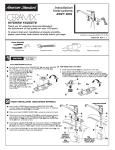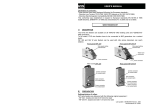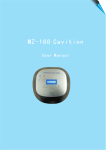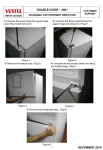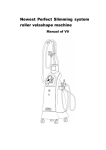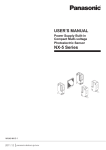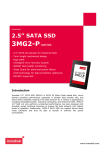Download Tech Brief: Recording SATA DevSlp Low Power
Transcript
TECHNICAL BRIEF Recording Protocol Traces for Device Sleep (DevSlp) Drives Matthew Dunn and Peter Lizak Teledyne LeCroy Protocol Solutions Group A s solid-state drives (SSDs) continue to develop in capability and sophistication, new features such as Device Sleep (DevSlp) are being added to the feature set of many drives. DevSlp allows a drive to “sleep” in a very low power state (typically about 5% of power draw compared to IDLE mode) while maintaining a quick response to access requirements for the drive. Recording of protocol traces for drives using DevSlp requires the protocol analyzer to be able to monitor the DevSlp state and record this information along with normal data traffic. Teledyne LeCroy supports this capability for systems including the Sierra M6-2, Sierra M6-4 and Sierra M124 by offering an expansion card that has the ability to directly monitor DevSlp status, and records this information as part of the trace file stored by the protocol analyzer. Figure 1: Removing an existing expansion card 2. Insert the ACC-EXP-005-X Sierra External Power Expansion Card by sliding it into the slots provided and tighting the screws using a standard screwdriver. Process To record DevSlp status, the ACC-EXP-005-X expansion card is required. This card inserts into the expansion slot available on certain Teledyne LeCroy protocol analyzer systems. To use the system, follow these steps: 1. Power off the Sierra system, and remove the blank cover plate from the expansion slot (see page 32 of the User Manual for detailed instructions). If there is already a different expansion card in use, remove the expansion card by using the special removal tool supplied and slowing backing the existing expansion card out by loosening one side at a time until the card is fully released. Recording Protocol Traces for Device Sleep (DevSlp) Drives Figure 2: Inserting the ACC-EXP-005-X card 3. (a) For pass-through mode, connect the power or power sense cable (921671) to the POWER connector on the expansion card. Connect the other end of the cable to the ground and DevSlp line on the device under test (DUT). This connection can be made either by soldering short wires (supplied) to exposed traces or pins, or by clipping the attachment clips (also supplied) to pins. Connect SATA data cables from the HBA to the Initiator port on the analyzer and then from the Target port of the analyzer to the DUT. Teledyne LeCroy Page 1 of 2 TECHNICAL BRIEF Figure 3: Configuration used for pass-through mode Figure 5: Configuration used for Host Emulation mode 4. Record traces in the normal way. The DevSlp status will be recorded in the trace and will be displayed by the software. Figure 6: Recorded trace showing DevSlp status Figure 4: Attachment of probe leads to DevSlp and GND pins (attachment clips shown here) 3. (b) For host emulation mode, connect the power or power sense cable (921095 or 921097) to the power connector on the exansion card. Connect the other end to the power connector on the DUT. Connect a SATA cable from the from the Target port of the analyzer to the DUT. To show Device Sleep status in Packet View during Command sequences, open up any FIS Type packet to the Link level then right-click on the green Link field. On the menu that then appears choose Show Field then Device Sleep as shown. Likewise, to show Device Sleep during OOB sequences right-click on any OOB packet to bring up the Show Field menu. Recording Protocol Traces for Device Sleep (DevSlp) Drives Teledyne LeCroy Page 2 of 2



